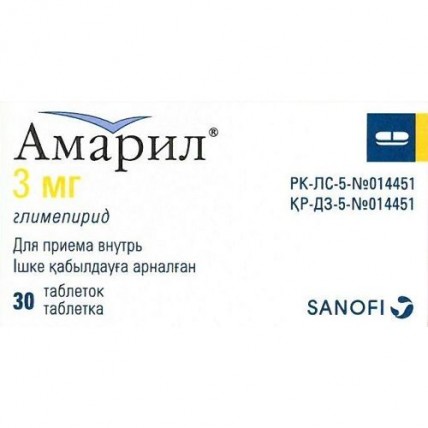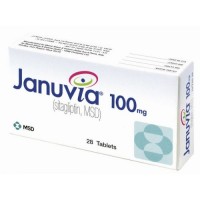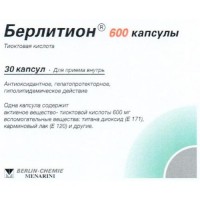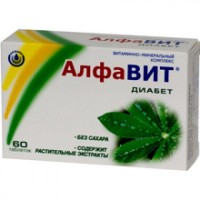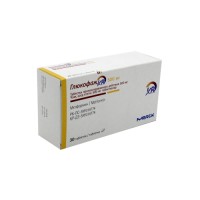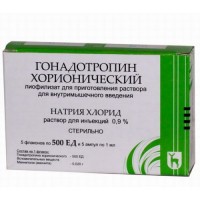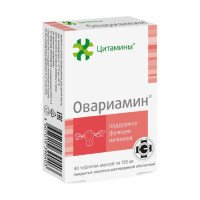Amaryl® (Glimepiride) 3 mg (30 tablets)
- $23.70
Glimepiride is used with a proper diet and exercise program to control high blood sugar in people with type 2 diabetes. It may also be used with other diabetes medications. Controlling high blood sugar helps prevent kidney damage, blindness, nerve problems, loss of limbs, and sexual function problems.
Tablets 1 mg, 2 mg, 3 mg, 4 mg
One 1 mg tablet contains
active substance - glimepiride 1 mg,
auxiliary substances: lactose monohydrate, sodium starch glycolate (type A), povidone 25000, microcrystalline cellulose, magnesium stearate, iron (III) oxide red (E172).
One 2 mg tablet contains
active substance - glimepiride 2 mg,
excipients: lactose monohydrate, sodium starch glycolate (type A), povidone 25000, microcrystalline cellulose, magnesium stearate, iron (III) oxide yellow (E172), indigo carmine aluminum varnish (E132).
One 3 mg tablet contains
active substance - glimepiride 3 mg,
auxiliary substances: lactose monohydrate, sodium starch glycolate (type A), povidone 25000, microcrystalline cellulose, magnesium stearate, iron (III) oxide yellow (E172).
- for the treatment of type 2 diabetes mellitus, when diet, exercise and weight loss alone do not provide sufficient control of the disease.
For oral administration.
A good diet, regular exercise, and regular blood and urine tests are essential to successfully treating diabetes. Pills or insulin do not replace the need to follow the patient's recommended diet. Dosage is determined based on blood and urine glucose tests.
The starting dose is 1 mg glimepiride per day. If the appropriate level of control is achieved, this dosage should be used for maintenance therapy.
For various modes of use of the drug, there are appropriate release forms.
In case of insufficient control, it is necessary to gradually increase the dose, with an interval of 1-2 weeks between stages, based on the indicators of glycemic control, to 2, 3 or 4 mg of glimepiride per day.
A dosage of more than 4 mg of glimepiride per day gives better results only in exceptional cases. The maximum recommended dose is 6 mg glimepiride per day.
Patients whose disease cannot be adequately controlled with the maximum daily doses of metformin may be prescribed concomitant therapy with glimepiride.
While maintaining the dose of metformin used, glimepiride therapy should be started at the lowest dose followed by titration up to the maximum daily dose, depending on the level of metabolic control desired. Such combination therapy should only be started under close medical supervision.
Patients who do not achieve a sufficient level of control when using Amaril in the maximum daily dose may, if necessary, be prescribed concomitant insulin therapy. While maintaining the dose of glimepiride used, insulin therapy should be started at a low dose and then increased, depending on the desired level of metabolic control. Such combination therapy should only be started under close medical supervision.
As a rule, a single daily dose of glimepiride is sufficient for the patient. It is recommended to take this dose immediately before or during a hearty breakfast, and if breakfast is skipped, then immediately before or during the first main meal.
If the patient forgets to take a dose, it should not be compensated for by increasing the next dose.
The tablets should be swallowed without chewing, with a little liquid.
If, while taking 1 mg of glimepiride once a day, a patient develops a hypoglycemic reaction, this indicates that only a proper diet can be enough for this patient to control the disease.
During treatment, as the control of diabetes mellitus improves, accompanied by an increase in insulin sensitivity, the need for glimepiride may decrease. Therefore, in order to avoid hypoglycemia, one should remember the need for a timely dose reduction or discontinuation of therapy in such cases. A dose adjustment may also be required in case of changes in body weight or lifestyle, as well as other factors that increase the risk of developing hypo- or hyperglycemia.
- Switching to Amaryl® from other oral hypoglycemic agents
Switching to Amaryl® from other oral hypoglycemic agents is generally allowed. When switching to Amaryl®, it is necessary to take into account the dosage and half-life of the previous drug. In some cases, in particular when taking antidiabetic agents with a long half-life (for example, chlorpropamide), a washout period of several days is recommended in order to minimize the risk of hypoglycemic reactions due to the additive effect.
The recommended starting dose is 1 mg glimepiride per day. Depending on the response, a gradual increase in the dose of glimepiride may be provided as described above.
- Switching from insulin to Amaryl®
In exceptional cases, when patients with type 2 diabetes mellitus are treated with insulin, a transition to treatment with Amaryl® may be indicated. Such a transition should be carried out under the close supervision of a physician.
- Special populations
Patients with impaired renal or hepatic function: see section "Contraindications".
- Pediatric population
There are no data on the use of glimepiride in patients under the age of 8 years. As for children aged 8 to 17 years, there are only limited data on the use of glimepiride as monotherapy (see sections "Pharmacokinetics" and "Pharmacodynamics"). Currently, there is insufficient data on the safety and efficacy of the drug in the pediatric population, so this use is not recommended.
Below is a list of adverse reactions noted in clinical trials using Amaryl and other sulfonylurea derivatives. Relevant reactions are listed in descending order of frequency of occurrence (very often: ≥ 1/10; often: from ≥ 1/100 to <1/10; infrequently: from ≥ 1/1000 to <1/100; rarely: from ≥ 1 / 10,000 to <1/1000; very rare: <1/10,000; with unknown
frequency of occurrence).
Rarely
- thrombocytopenia, leukopenia, granulocytopenia, agranulocytosis, erythropenia, hemolytic anemia and pancytopenia, which, as a rule, are reversible and disappear after stopping the drug.
- hypoglycemia; such hypoglycemic reactions are generally immediate, can be severe and not always easy to correct. The development of these reactions, as in the case of other hypoglycemic therapy regimens, depends on individual factors, such as dietary habits and dosage (for more details, see the "Special instructions" section).
Very rarely
- leukocytoclastic vasculitis, mild hypersensitivity reactions that can turn into serious reactions with difficulty breathing, a drop in blood pressure, and sometimes even shock
- nausea, vomiting, diarrhea, bloating, discomfort and pain in the abdominal area, which in rare cases lead to discontinuation of treatment
- liver dysfunction (for example, with cholestasis and jaundice), hepatitis and liver failure
- low blood sodium levels
Frequency unknown
- the development of cross-allergenicity with sulfonylurea derivatives, sulfonamides or related substances is possible
- temporary visual disturbances can be observed, in particular, at the beginning of treatment due to changes in blood glucose levels
- severe thrombocytopenia with a platelet count of less than 10,000 / μL and thrombocytopenic purpura
- increased levels of liver enzymes
- skin hypersensitivity reaction, manifested in the form of itching, rash, urticaria and photosensitivity.
- hypersensitivity to glimepiride, other sulfonyl-urea drugs, sulfonamides or any of the excipients
- insulin-dependent diabetes mellitus
- diabetic coma
- ketoacidosis
- severe renal or liver dysfunction. In case of severe impairment of kidney or liver function, it is necessary to transfer the patient to insulin
- children and adolescents up to 18 years old
If glimepiride is taken concurrently with certain other drugs, it may be accompanied by an undesirable increase or decrease in its hypoglycemic effect. In this regard, other drugs should be used only after informing the doctor about it (or on his prescription).
Glimepiride is metabolized by cytochrome P450 2C9 (CYP2C9). It is known that its metabolism is affected by the concomitant use of inducers (for example, rifampicin) or CYP2C9 inhibitors (for example, fluconazole).
The published results of an in vivo interaction study show that the use of fluconazole, one of the most potent inhibitors of CYP2C9, is accompanied by an approximately 2-fold increase in the area under the concentration-time curve (AUC) of glimepiride.
Taking into account the experience of using glimepiride and other sulfonylurea derivatives, it seems necessary to point out the following interactions.
An increase in the effect of lowering blood glucose levels and, accordingly, the development of hypoglycemia in some cases can be observed with the use of one of the following drugs:
- phenylbutazone, azapropazone and oxyphenbutazone
- insulin and oral antidiabetic drugs such as metformin
- salts of salicylic acid and preparations of paraaminosalicylic acid
- anabolic steroids and male sex hormones
- chloramphenicol, some long-acting sulfonamides, tetracyclines, quinolone antibiotics and clarithromycin
- coumarin anticoagulants
- fenfluramine
- disopyramid
- fibrates
- ACE inhibitors
- fluoxetine, MAO inhibitors
- allopurinol, probenecid, sulfinpyrazone
- sympatholytic agents
- cyclophosphamide, trophosphamide and ifosfamides
- miconazole, fluconazole
- pentoxifylline (parenteral, in high doses)
- tritoqualine
The weakening of the effect of lowering blood glucose levels and, accordingly, increased blood glucose levels can be observed with the use of one of the following drugs:
- estrogens and progestogens
- saluretics and thiazide diuretics
- thyrotropic drugs, glucocorticoids
- derivatives of phenothiazine, chlorpromazine
- adrenaline and sympathomimetics
- nicotinic acid (in high doses) and nicotinic acid derivatives
- laxatives (with prolonged use)
- phenytoin, diazoxide
- glucagon, barbiturates and rifampicin
- acetazolamide
H2 receptor antagonists, beta-blockers, clonidine and reserpine can both increase and decrease the effect of lowering blood glucose levels.
Under the influence of sympatholytic drugs such as beta-blockers, clonidine, guanethidine, and reserpine, signs of adrenergic counterregulation in response to hypoglycemia may be reduced or absent.
Alcohol consumption can cause an unpredictable increase or decrease in the hypoglycemic effect of glimepiride.
Glimepiride can both enhance and weaken the effect of coumarin derivatives.
Kolesevelam binds to glimepiride and reduces the absorption of glimepiride from the gastrointestinal tract. There was no interaction observed when taking glimepiride, at least 4 hours before taking colesevelam. Therefore, glimepiride should be taken at least 4 hours before taking colesevelam.
Amaryl® should be taken immediately before or during meals.
With irregular meals or skipping regular meals, treatment with Amaril can lead to the development of hypoglycemia. Possible symptoms of hypoglycemia include: headache, insatiable hunger, nausea, vomiting, fatigue, drowsiness, sleep disturbances, agitation, aggressiveness, deterioration in concentration, weakening of attention and reaction, depression, confusion, speech and visual impairment, aphasia, tremor, paresis, sensory disturbances, dizziness, a state of helplessness, loss of self-control, delirium, cerebral cramps, drowsiness and loss of consciousness up to coma, shallow breathing and bradycardia. In addition, signs of adrenergic counter-regulation such as sweating, clammy skin, anxiety, tachycardia, hypertension, palpitations, angina pectoris, and cardiac arrhythmias may be present.
The clinical picture of an attack of severe hypoglycemia may resemble the picture of a stroke.
Symptoms can almost always be stopped immediately by taking carbohydrates (sugar) immediately. Sugar substitutes are not effective in this case.
The practice of using other sulfonylurea derivatives shows that the re-development of hypoglycemia is possible, even despite the initial success of the measures taken.
With severe or prolonged hypoglycemia, only temporarily controlled by the use of ordinary amounts of sugar, immediate medical attention is required, and in some cases even hospitalization.
Factors contributing to the development of hypoglycemia include:
- reluctance or (more often in older patients) inability of the patient to interact with healthcare professionals
- inadequate nutrition, irregular eating, skipping meals or periods of fasting
- diet changes
- lack of balance between exercise and carbohydrate intake
- drinking alcohol, especially when combined with skipping meals
- renal dysfunction
- serious liver dysfunction
- Amaril overdose
- some uncompensated disorders of the endocrine system that affect carbohydrate metabolism or counter-regulation of hypoglycemia (as, for example, with certain disorders of the thyroid gland and insufficiency of the adenohypophysis or adrenal cortex)
- the simultaneous use of some other drugs (see section "Drug interactions").
In the treatment with Amaril, regular monitoring of blood and urine glucose levels is required. In addition, the determination of the level of glycated hemoglobin is recommended.
During treatment with Amaril, regular monitoring of hepatic and hematological parameters (in particular, the number of leukocytes and platelets) is required.
In stressful situations (for example, in accidents, emergency operations, infectious diseases with fever, etc.), a temporary switch to insulin may be indicated.
To date, no experience has been accumulated in the use of Amaril in patients with severe liver dysfunction or in patients on dialysis. For patients with severely impaired renal or liver function, a switch to insulin is indicated.
In patients with G6PD (glucose-6-phosphate dehydrogenase) deficiency, treatment with sulfonylurea derivatives can lead to the development of hemolytic anemia. Since glimepiride belongs to the class of sulfonylurea derivatives, it should be used with caution in patients with G6PD deficiency and an alternative non-sulfonylurea drug should be considered.
Amaryl® contains lactose monohydrate. Patients with rare congenital disorders such as galactose intolerance, Lapp lactase deficiency or glucose-galactose malabsorption should not take this medication.
Amaryl® 6 mg tablets contains FCF (E110), an aluminum dye-color, sunset yellow, which may cause allergic reactions.
Pregnancy
Risks associated with diabetes
During pregnancy, abnormalities in blood glucose levels are accompanied by an increased incidence of congenital anomalies and perinatal mortality. Therefore, in order to avoid the risk of teratogenicity, blood glucose levels should be carefully monitored throughout pregnancy. In such circumstances, the use of insulin is necessary. Patients planning a pregnancy should inform their doctor about this.
Risks associated with glimepiride
At the moment, there is no relevant data on the use of glimepiride in pregnant women. Preclinical studies have demonstrated the presence of reproductive toxicity, which appears to be associated with the pharmacological action (hypoglycemia) of glimepiride.
Accordingly, glimepiride should not be taken throughout pregnancy.
If during treatment with glimepiride the patient plans to become pregnant or the fact of pregnancy is established, it is necessary to transfer her to insulin therapy as soon as possible.
Lactation
It is not known whether the drug is excreted in breast milk in breastfeeding women. In preclinical studies, it was found that glimepiride is excreted in breast milk. Since other sulfonylurea derivatives can be excreted into human breast milk, and given the risk of hypoglycemia in breastfed infants, it is recommended to refrain from breastfeeding during glimepiride treatment.
Features of the effect of the drug on the ability to drive a vehicle or potentially dangerous mechanisms
Studies of the effect of the drug on the ability to drive vehicles and work with mechanisms have not been conducted.
As a result of hypoglycemia or hyperglycemia, or, for example, due to visual disturbances, the patient may experience a deterioration in the ability to concentrate and respond.
This can pose a risk in situations where these abilities are especially important (for example, when driving or operating machinery).
Patients should receive appropriate advice on the precautions to be taken to avoid hypoglycemia while driving. This is especially important for individuals with little or no knowledge of the predictive symptoms of hypoglycemia, and for patients with frequent episodes of hypoglycemia. In such circumstances, it may be that the patient should be advised to refrain from driving or operating machinery.
Symptoms: after ingestion of an excessive dose, hypoglycemia may develop lasting 12 to 72 hours, which may recur after initial recovery. Symptoms of hypoglycemia may be absent for up to 24 hours after administration. Inpatient supervision is usually recommended. The patient may have symptoms such as nausea, vomiting, and epigastric pain. In addition, hypoglycemia is often accompanied by a number of neurological symptoms such as restlessness, tremors, visual disturbances, coordination problems, drowsiness, coma, and seizures.
Treatment: consists mainly of preventing absorption by stimulating vomiting followed by drinking water or lemonade with activated charcoal (adsorbent) and sodium sulfate (laxative). In the case of ingestion of large amounts of the drug, gastric lavage is indicated, followed by the intake of activated carbon and sodium sulfate. In the event of a severe (severe) overdose, hospitalization in the intensive care unit is indicated. It is necessary to start administering glucose to the patient as soon as possible: if necessary, by bolus intravenous injection of 50 ml of a 50% solution, followed by an infusion of a 10% solution with careful monitoring of blood glucose levels. In the future, symptomatic treatment is prescribed.
In the treatment of hypoglycemia, caused, in particular, by the accidental intake of Amaril in infants or young children, it is necessary to carefully monitor the administered dose of glucose to avoid the possible development of dangerous hyperglycemia. Continuous monitoring of blood glucose levels is required.
Store at a temperature not exceeding 30 ° C.
Keep out of the reach of children!
Tablets 1 mg, 2 mg, 3 mg, 4 mg - 3 years.
Do not use after the expiration date printed on the package.
Dosage form
Tablets 1 mg, 2 mg, 3 mg, 4 mg
Structure
One 1 mg tablet contains
active substance - glimepiride 1 mg,
auxiliary substances: lactose monohydrate, sodium starch glycolate (type A), povidone 25000, microcrystalline cellulose, magnesium stearate, iron (III) oxide red (E172).
One 2 mg tablet contains
active substance - glimepiride 2 mg,
excipients: lactose monohydrate, sodium starch glycolate (type A), povidone 25000, microcrystalline cellulose, magnesium stearate, iron (III) oxide yellow (E172), indigo carmine aluminum varnish (E132).
One 3 mg tablet contains
active substance - glimepiride 3 mg,
auxiliary substances: lactose monohydrate, sodium starch glycolate (type A), povidone 25000, microcrystalline cellulose, magnesium stearate, iron (III) oxide yellow (E172).
Indications for use
- for the treatment of type 2 diabetes mellitus, when diet, exercise and weight loss alone do not provide sufficient control of the disease.
Method of administration and dosage
For oral administration.
A good diet, regular exercise, and regular blood and urine tests are essential to successfully treating diabetes. Pills or insulin do not replace the need to follow the patient's recommended diet. Dosage is determined based on blood and urine glucose tests.
The starting dose is 1 mg glimepiride per day. If the appropriate level of control is achieved, this dosage should be used for maintenance therapy.
For various modes of use of the drug, there are appropriate release forms.
In case of insufficient control, it is necessary to gradually increase the dose, with an interval of 1-2 weeks between stages, based on the indicators of glycemic control, to 2, 3 or 4 mg of glimepiride per day.
A dosage of more than 4 mg of glimepiride per day gives better results only in exceptional cases. The maximum recommended dose is 6 mg glimepiride per day.
Patients whose disease cannot be adequately controlled with the maximum daily doses of metformin may be prescribed concomitant therapy with glimepiride.
While maintaining the dose of metformin used, glimepiride therapy should be started at the lowest dose followed by titration up to the maximum daily dose, depending on the level of metabolic control desired. Such combination therapy should only be started under close medical supervision.
Patients who do not achieve a sufficient level of control when using Amaril in the maximum daily dose may, if necessary, be prescribed concomitant insulin therapy. While maintaining the dose of glimepiride used, insulin therapy should be started at a low dose and then increased, depending on the desired level of metabolic control. Such combination therapy should only be started under close medical supervision.
As a rule, a single daily dose of glimepiride is sufficient for the patient. It is recommended to take this dose immediately before or during a hearty breakfast, and if breakfast is skipped, then immediately before or during the first main meal.
If the patient forgets to take a dose, it should not be compensated for by increasing the next dose.
The tablets should be swallowed without chewing, with a little liquid.
If, while taking 1 mg of glimepiride once a day, a patient develops a hypoglycemic reaction, this indicates that only a proper diet can be enough for this patient to control the disease.
During treatment, as the control of diabetes mellitus improves, accompanied by an increase in insulin sensitivity, the need for glimepiride may decrease. Therefore, in order to avoid hypoglycemia, one should remember the need for a timely dose reduction or discontinuation of therapy in such cases. A dose adjustment may also be required in case of changes in body weight or lifestyle, as well as other factors that increase the risk of developing hypo- or hyperglycemia.
- Switching to Amaryl® from other oral hypoglycemic agents
Switching to Amaryl® from other oral hypoglycemic agents is generally allowed. When switching to Amaryl®, it is necessary to take into account the dosage and half-life of the previous drug. In some cases, in particular when taking antidiabetic agents with a long half-life (for example, chlorpropamide), a washout period of several days is recommended in order to minimize the risk of hypoglycemic reactions due to the additive effect.
The recommended starting dose is 1 mg glimepiride per day. Depending on the response, a gradual increase in the dose of glimepiride may be provided as described above.
- Switching from insulin to Amaryl®
In exceptional cases, when patients with type 2 diabetes mellitus are treated with insulin, a transition to treatment with Amaryl® may be indicated. Such a transition should be carried out under the close supervision of a physician.
- Special populations
Patients with impaired renal or hepatic function: see section "Contraindications".
- Pediatric population
There are no data on the use of glimepiride in patients under the age of 8 years. As for children aged 8 to 17 years, there are only limited data on the use of glimepiride as monotherapy (see sections "Pharmacokinetics" and "Pharmacodynamics"). Currently, there is insufficient data on the safety and efficacy of the drug in the pediatric population, so this use is not recommended.
Side effects
Below is a list of adverse reactions noted in clinical trials using Amaryl and other sulfonylurea derivatives. Relevant reactions are listed in descending order of frequency of occurrence (very often: ≥ 1/10; often: from ≥ 1/100 to <1/10; infrequently: from ≥ 1/1000 to <1/100; rarely: from ≥ 1 / 10,000 to <1/1000; very rare: <1/10,000; with unknown
frequency of occurrence).
Rarely
- thrombocytopenia, leukopenia, granulocytopenia, agranulocytosis, erythropenia, hemolytic anemia and pancytopenia, which, as a rule, are reversible and disappear after stopping the drug.
- hypoglycemia; such hypoglycemic reactions are generally immediate, can be severe and not always easy to correct. The development of these reactions, as in the case of other hypoglycemic therapy regimens, depends on individual factors, such as dietary habits and dosage (for more details, see the "Special instructions" section).
Very rarely
- leukocytoclastic vasculitis, mild hypersensitivity reactions that can turn into serious reactions with difficulty breathing, a drop in blood pressure, and sometimes even shock
- nausea, vomiting, diarrhea, bloating, discomfort and pain in the abdominal area, which in rare cases lead to discontinuation of treatment
- liver dysfunction (for example, with cholestasis and jaundice), hepatitis and liver failure
- low blood sodium levels
Frequency unknown
- the development of cross-allergenicity with sulfonylurea derivatives, sulfonamides or related substances is possible
- temporary visual disturbances can be observed, in particular, at the beginning of treatment due to changes in blood glucose levels
- severe thrombocytopenia with a platelet count of less than 10,000 / μL and thrombocytopenic purpura
- increased levels of liver enzymes
- skin hypersensitivity reaction, manifested in the form of itching, rash, urticaria and photosensitivity.
Contraindications
- hypersensitivity to glimepiride, other sulfonyl-urea drugs, sulfonamides or any of the excipients
- insulin-dependent diabetes mellitus
- diabetic coma
- ketoacidosis
- severe renal or liver dysfunction. In case of severe impairment of kidney or liver function, it is necessary to transfer the patient to insulin
- children and adolescents up to 18 years old
Drug interactions
If glimepiride is taken concurrently with certain other drugs, it may be accompanied by an undesirable increase or decrease in its hypoglycemic effect. In this regard, other drugs should be used only after informing the doctor about it (or on his prescription).
Glimepiride is metabolized by cytochrome P450 2C9 (CYP2C9). It is known that its metabolism is affected by the concomitant use of inducers (for example, rifampicin) or CYP2C9 inhibitors (for example, fluconazole).
The published results of an in vivo interaction study show that the use of fluconazole, one of the most potent inhibitors of CYP2C9, is accompanied by an approximately 2-fold increase in the area under the concentration-time curve (AUC) of glimepiride.
Taking into account the experience of using glimepiride and other sulfonylurea derivatives, it seems necessary to point out the following interactions.
An increase in the effect of lowering blood glucose levels and, accordingly, the development of hypoglycemia in some cases can be observed with the use of one of the following drugs:
- phenylbutazone, azapropazone and oxyphenbutazone
- insulin and oral antidiabetic drugs such as metformin
- salts of salicylic acid and preparations of paraaminosalicylic acid
- anabolic steroids and male sex hormones
- chloramphenicol, some long-acting sulfonamides, tetracyclines, quinolone antibiotics and clarithromycin
- coumarin anticoagulants
- fenfluramine
- disopyramid
- fibrates
- ACE inhibitors
- fluoxetine, MAO inhibitors
- allopurinol, probenecid, sulfinpyrazone
- sympatholytic agents
- cyclophosphamide, trophosphamide and ifosfamides
- miconazole, fluconazole
- pentoxifylline (parenteral, in high doses)
- tritoqualine
The weakening of the effect of lowering blood glucose levels and, accordingly, increased blood glucose levels can be observed with the use of one of the following drugs:
- estrogens and progestogens
- saluretics and thiazide diuretics
- thyrotropic drugs, glucocorticoids
- derivatives of phenothiazine, chlorpromazine
- adrenaline and sympathomimetics
- nicotinic acid (in high doses) and nicotinic acid derivatives
- laxatives (with prolonged use)
- phenytoin, diazoxide
- glucagon, barbiturates and rifampicin
- acetazolamide
H2 receptor antagonists, beta-blockers, clonidine and reserpine can both increase and decrease the effect of lowering blood glucose levels.
Under the influence of sympatholytic drugs such as beta-blockers, clonidine, guanethidine, and reserpine, signs of adrenergic counterregulation in response to hypoglycemia may be reduced or absent.
Alcohol consumption can cause an unpredictable increase or decrease in the hypoglycemic effect of glimepiride.
Glimepiride can both enhance and weaken the effect of coumarin derivatives.
Kolesevelam binds to glimepiride and reduces the absorption of glimepiride from the gastrointestinal tract. There was no interaction observed when taking glimepiride, at least 4 hours before taking colesevelam. Therefore, glimepiride should be taken at least 4 hours before taking colesevelam.
Special instructions
Amaryl® should be taken immediately before or during meals.
With irregular meals or skipping regular meals, treatment with Amaril can lead to the development of hypoglycemia. Possible symptoms of hypoglycemia include: headache, insatiable hunger, nausea, vomiting, fatigue, drowsiness, sleep disturbances, agitation, aggressiveness, deterioration in concentration, weakening of attention and reaction, depression, confusion, speech and visual impairment, aphasia, tremor, paresis, sensory disturbances, dizziness, a state of helplessness, loss of self-control, delirium, cerebral cramps, drowsiness and loss of consciousness up to coma, shallow breathing and bradycardia. In addition, signs of adrenergic counter-regulation such as sweating, clammy skin, anxiety, tachycardia, hypertension, palpitations, angina pectoris, and cardiac arrhythmias may be present.
The clinical picture of an attack of severe hypoglycemia may resemble the picture of a stroke.
Symptoms can almost always be stopped immediately by taking carbohydrates (sugar) immediately. Sugar substitutes are not effective in this case.
The practice of using other sulfonylurea derivatives shows that the re-development of hypoglycemia is possible, even despite the initial success of the measures taken.
With severe or prolonged hypoglycemia, only temporarily controlled by the use of ordinary amounts of sugar, immediate medical attention is required, and in some cases even hospitalization.
Factors contributing to the development of hypoglycemia include:
- reluctance or (more often in older patients) inability of the patient to interact with healthcare professionals
- inadequate nutrition, irregular eating, skipping meals or periods of fasting
- diet changes
- lack of balance between exercise and carbohydrate intake
- drinking alcohol, especially when combined with skipping meals
- renal dysfunction
- serious liver dysfunction
- Amaril overdose
- some uncompensated disorders of the endocrine system that affect carbohydrate metabolism or counter-regulation of hypoglycemia (as, for example, with certain disorders of the thyroid gland and insufficiency of the adenohypophysis or adrenal cortex)
- the simultaneous use of some other drugs (see section "Drug interactions").
In the treatment with Amaril, regular monitoring of blood and urine glucose levels is required. In addition, the determination of the level of glycated hemoglobin is recommended.
During treatment with Amaril, regular monitoring of hepatic and hematological parameters (in particular, the number of leukocytes and platelets) is required.
In stressful situations (for example, in accidents, emergency operations, infectious diseases with fever, etc.), a temporary switch to insulin may be indicated.
To date, no experience has been accumulated in the use of Amaril in patients with severe liver dysfunction or in patients on dialysis. For patients with severely impaired renal or liver function, a switch to insulin is indicated.
In patients with G6PD (glucose-6-phosphate dehydrogenase) deficiency, treatment with sulfonylurea derivatives can lead to the development of hemolytic anemia. Since glimepiride belongs to the class of sulfonylurea derivatives, it should be used with caution in patients with G6PD deficiency and an alternative non-sulfonylurea drug should be considered.
Amaryl® contains lactose monohydrate. Patients with rare congenital disorders such as galactose intolerance, Lapp lactase deficiency or glucose-galactose malabsorption should not take this medication.
Amaryl® 6 mg tablets contains FCF (E110), an aluminum dye-color, sunset yellow, which may cause allergic reactions.
Pregnancy
Risks associated with diabetes
During pregnancy, abnormalities in blood glucose levels are accompanied by an increased incidence of congenital anomalies and perinatal mortality. Therefore, in order to avoid the risk of teratogenicity, blood glucose levels should be carefully monitored throughout pregnancy. In such circumstances, the use of insulin is necessary. Patients planning a pregnancy should inform their doctor about this.
Risks associated with glimepiride
At the moment, there is no relevant data on the use of glimepiride in pregnant women. Preclinical studies have demonstrated the presence of reproductive toxicity, which appears to be associated with the pharmacological action (hypoglycemia) of glimepiride.
Accordingly, glimepiride should not be taken throughout pregnancy.
If during treatment with glimepiride the patient plans to become pregnant or the fact of pregnancy is established, it is necessary to transfer her to insulin therapy as soon as possible.
Lactation
It is not known whether the drug is excreted in breast milk in breastfeeding women. In preclinical studies, it was found that glimepiride is excreted in breast milk. Since other sulfonylurea derivatives can be excreted into human breast milk, and given the risk of hypoglycemia in breastfed infants, it is recommended to refrain from breastfeeding during glimepiride treatment.
Features of the effect of the drug on the ability to drive a vehicle or potentially dangerous mechanisms
Studies of the effect of the drug on the ability to drive vehicles and work with mechanisms have not been conducted.
As a result of hypoglycemia or hyperglycemia, or, for example, due to visual disturbances, the patient may experience a deterioration in the ability to concentrate and respond.
This can pose a risk in situations where these abilities are especially important (for example, when driving or operating machinery).
Patients should receive appropriate advice on the precautions to be taken to avoid hypoglycemia while driving. This is especially important for individuals with little or no knowledge of the predictive symptoms of hypoglycemia, and for patients with frequent episodes of hypoglycemia. In such circumstances, it may be that the patient should be advised to refrain from driving or operating machinery.
Overdose
Symptoms: after ingestion of an excessive dose, hypoglycemia may develop lasting 12 to 72 hours, which may recur after initial recovery. Symptoms of hypoglycemia may be absent for up to 24 hours after administration. Inpatient supervision is usually recommended. The patient may have symptoms such as nausea, vomiting, and epigastric pain. In addition, hypoglycemia is often accompanied by a number of neurological symptoms such as restlessness, tremors, visual disturbances, coordination problems, drowsiness, coma, and seizures.
Treatment: consists mainly of preventing absorption by stimulating vomiting followed by drinking water or lemonade with activated charcoal (adsorbent) and sodium sulfate (laxative). In the case of ingestion of large amounts of the drug, gastric lavage is indicated, followed by the intake of activated carbon and sodium sulfate. In the event of a severe (severe) overdose, hospitalization in the intensive care unit is indicated. It is necessary to start administering glucose to the patient as soon as possible: if necessary, by bolus intravenous injection of 50 ml of a 50% solution, followed by an infusion of a 10% solution with careful monitoring of blood glucose levels. In the future, symptomatic treatment is prescribed.
In the treatment of hypoglycemia, caused, in particular, by the accidental intake of Amaril in infants or young children, it is necessary to carefully monitor the administered dose of glucose to avoid the possible development of dangerous hyperglycemia. Continuous monitoring of blood glucose levels is required.
Storage conditions
Store at a temperature not exceeding 30 ° C.
Keep out of the reach of children!
Storage period
Tablets 1 mg, 2 mg, 3 mg, 4 mg - 3 years.
Do not use after the expiration date printed on the package.
